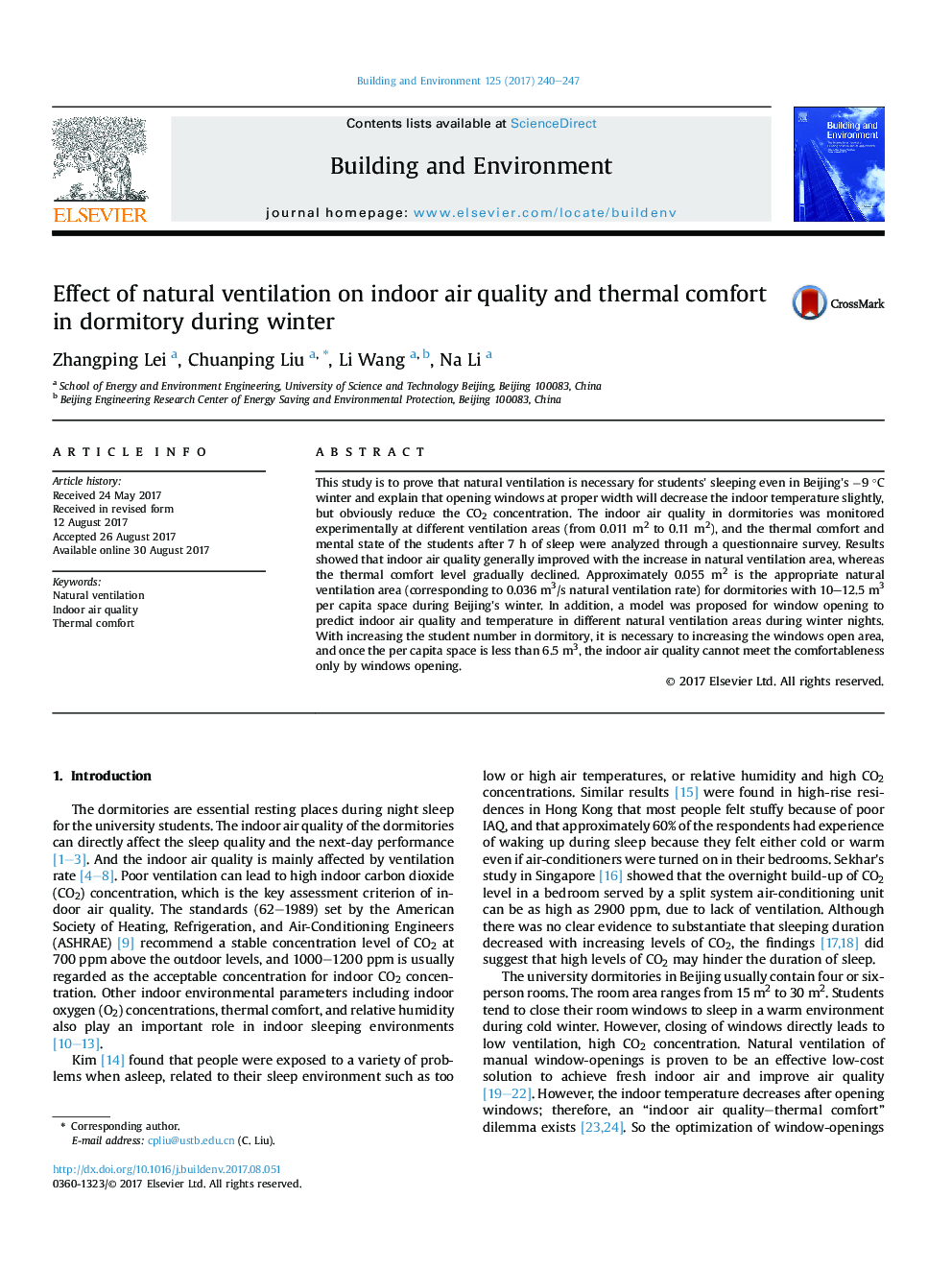| کد مقاله | کد نشریه | سال انتشار | مقاله انگلیسی | نسخه تمام متن |
|---|---|---|---|---|
| 6479226 | 1428367 | 2017 | 8 صفحه PDF | دانلود رایگان |
- An appropriate natural ventilation area is given in our experimental condition.
- A model was proposed for proper window opening during winter nights.
- Indoor air quality generally improved with increasing natural ventilation area.
- Thermal comfort level gradually declined with increasing natural ventilation area.
This study is to prove that natural ventilation is necessary for students' sleeping even in Beijing's â9 °C winter and explain that opening windows at proper width will decrease the indoor temperature slightly, but obviously reduce the CO2 concentration. The indoor air quality in dormitories was monitored experimentally at different ventilation areas (from 0.011 m2 to 0.11 m2), and the thermal comfort and mental state of the students after 7 h of sleep were analyzed through a questionnaire survey. Results showed that indoor air quality generally improved with the increase in natural ventilation area, whereas the thermal comfort level gradually declined. Approximately 0.055 m2 is the appropriate natural ventilation area (corresponding to 0.036 m3/s natural ventilation rate) for dormitories with 10-12.5 m3 per capita space during Beijing's winter. In addition, a model was proposed for window opening to predict indoor air quality and temperature in different natural ventilation areas during winter nights. With increasing the student number in dormitory, it is necessary to increasing the windows open area, and once the per capita space is less than 6.5 m3, the indoor air quality cannot meet the comfortableness only by windows opening.
Air quality, including indoor O2 concentrations (a), CO2 concentrations (b), temperature (c), and relative humidity (d), versus sleep time under different window opening areas. With increasing the window opening areas, the indoor O2 concentration gradually increased, the CO2 concentration decreased, and the temperature drop met the national heating standard. Approximately 0.055Â m2 is the appropriate natural ventilation area (corresponding to 0.036Â m3/s natural ventilation rate) for dormitories with 10-12.5Â m3 per capita space during Beijing's winter.210
Journal: Building and Environment - Volume 125, 15 November 2017, Pages 240-247
